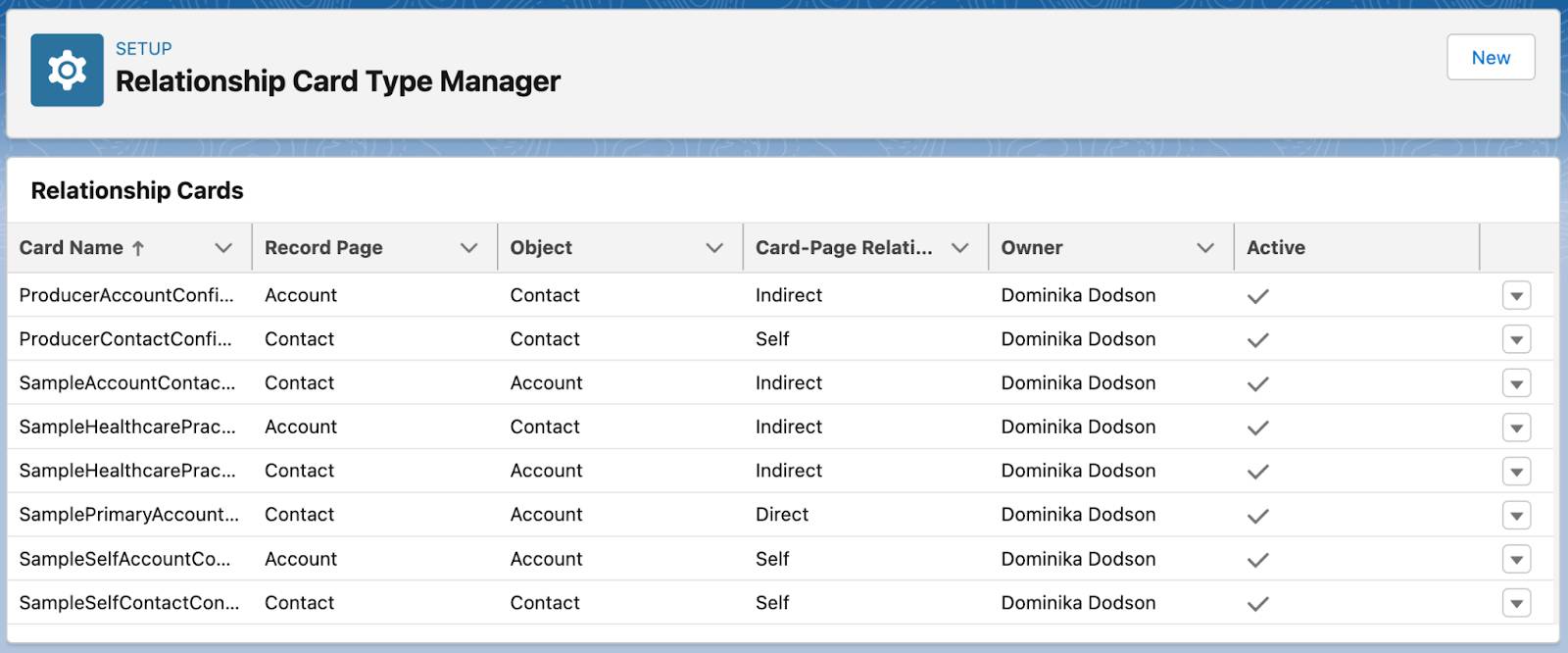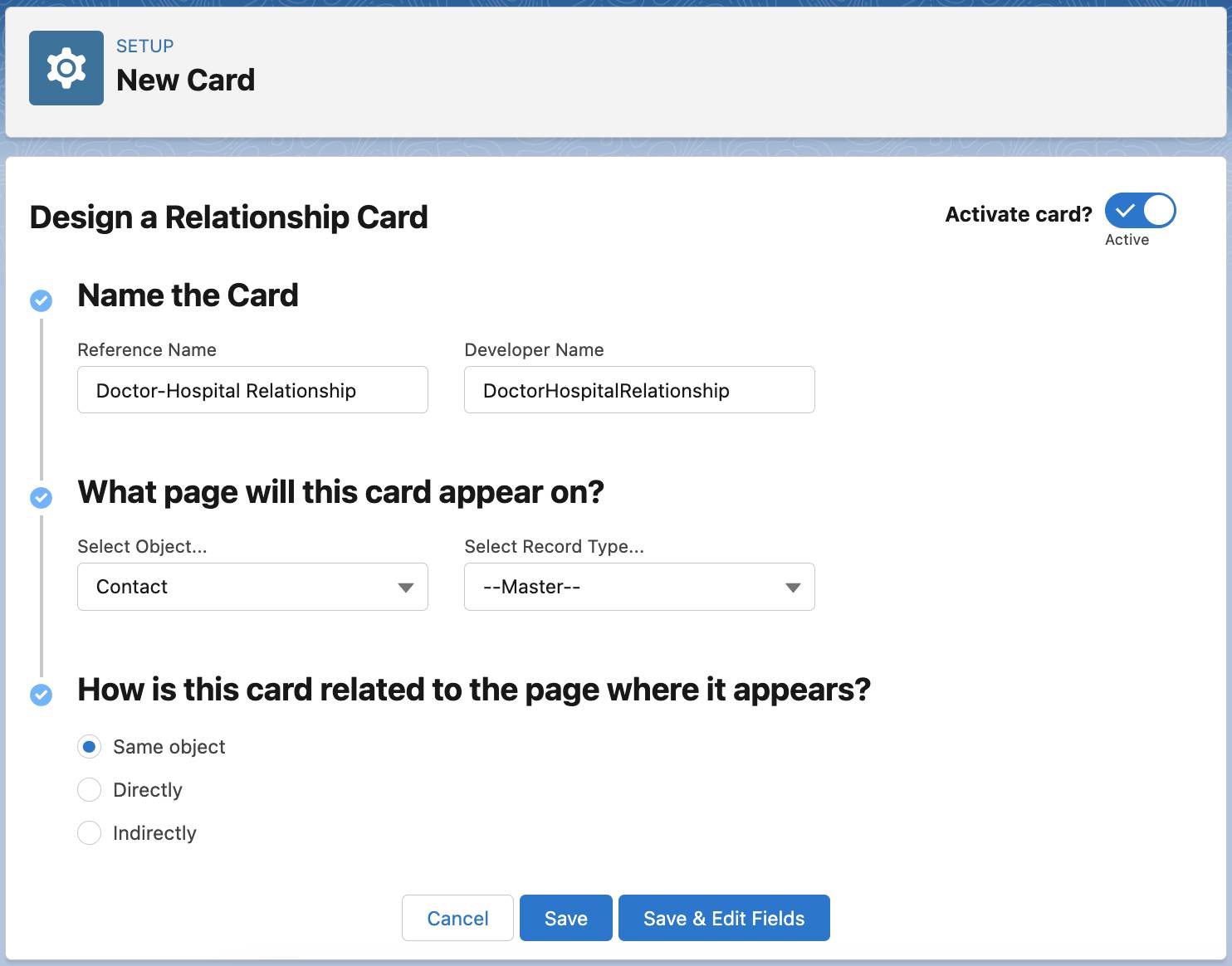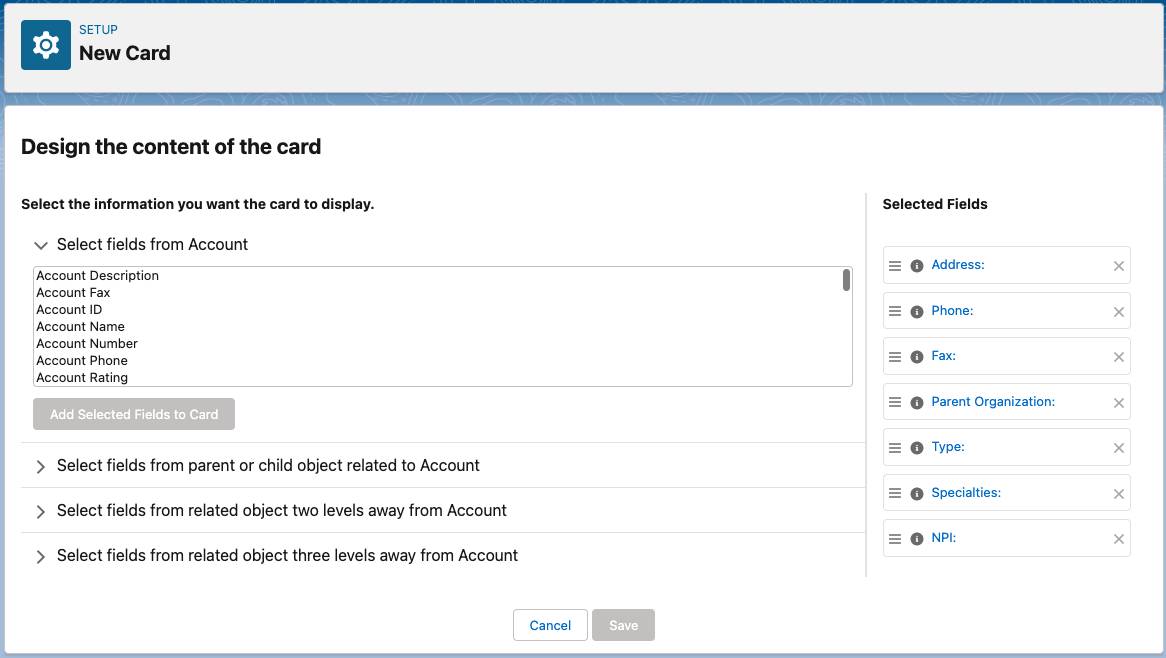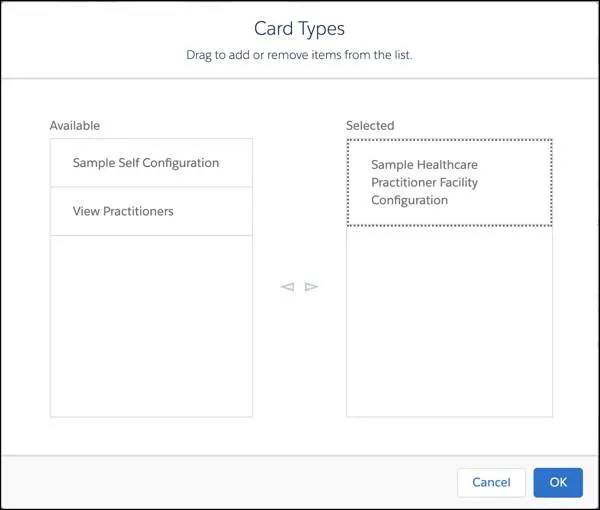Configure Provider Relationship Cards
Learning Objectives
After completing this unit, you’ll be able to:
- List the types of Provider Cards and how each type can be used.
- Add provider cards to a page layout.
Information at a Glance
The provider data model is a complex collection of objects representing information about physicians, practitioners, and facilities. The data gets even more complex because physicians have a complicated network of relationships. That data can include:
- Connections of the physicians with the provider organization (whether as an employed physician or an affiliated physician)
- Clinics where they work
- Practicing locations
- Operating hours
- Credentials
- Certifications
- Payer networks
With Provider Cards, you can visualize complex provider relationships on one page. You can use the Lightning App Builder to add the relationship card component to an Account or Contact page and specify the relationship card types you want to include on that page.
You can see all the related information for a contact or account. This includes objects like provider organizations, hospital locations, operating hours, and attributes such as specialty, credentials, and NPIs. For example, on the Contact page, you can see all the accounts that contact is associated with. While a health care practitioner’s Account record will show their affiliated hospital locations.
Without relationship cards, Audrey would have to navigate through related lists and go through numerous pages to access the information. With provider relationship cards, Audrey forgoes endless clicks for efficient effort.
Types of Provider Relationship Cards
You can set up different types of provider relationship cards to see the association between provider organizations and practitioners. Here are a few examples.
What |
Where |
Object Relationship |
|---|---|---|
Which practitioners work at this facility? |
Account page |
To see all practitioners (person accounts) that are related to the facility (account). |
Which facilities does this practitioner work at? |
Person account page |
To see all facilities (accounts) that are related to the practitioner (person account). |
Which other practitioners work with this practitioner? |
Person account page |
To see all practitioners (person accounts) that are related to the practitioner (person account). |
Which staff members work with this practitioner? |
Person account page |
To see all staff members (contacts) that are related to the practitioner (person account). |
Which practitioners work with this staff member? |
Contact page |
To see all practitioners (person accounts) that are related to the staff member (contact). |
In the table:
- The first column tells you what information you want your card to show.
- The second column tells you which record page you want this card to display.
- The third column gives you more context about the relationship between the record page where you display your card, and other objects affiliated with this card.
For example, you may set up a card hospital’s record page so that your call center agent can see a card for each physician working at that hospital. Hospitals are generally modeled as business accounts in Salesforce, so your card would appear on the account record page. Because you want each card to show information about physicians, and because physicians are generally modeled as person accounts in Salesforce, the card would have an account to person account relationship.
Configure Provider Cards with Setup Wizard
To create a new provider card, navigate to Setup, then search for and click Relationship Card Type Manager in the Quick Find box. The Relationship Card Type Manager has a list of all existing cards. It gives you a quick look at some key information about each card, and marks whether each card is active or not.

To create a new card, click New. This opens a setup wizard that assists you with creating new cards. The wizard has two steps:
- Design a Relationship Card
- Design the content of the card
Design a Relationship Card
This step asks you to name the card, set the page where it appears in your org, and define how the card relates to the page where it appears.

Enter the name of the provider card. For What page will the card appear on? select the object (either Account or Contact), and the record type. For How is this card related to the page where it appears? select one of these options:
-
Same object: All the information you want to display is in the object where the card is shown. For example, you are displaying the card on a facility’s Account page and it contains the facility’s address and phone number, which are stored in the facility’s Account record.
-
Directly: The information you want to display is in an object that's directly related to the current object. For example, your facility card displays the name and contact information for the person who books appointments at the facility. The Account object has a lookup field to the Contact object, which contains that information.
-
Indirectly: The information you want to show is in a junction object that connects the base object to the page where the card is displayed. For example, Healthcare Practitioner Facility is an object that matches practitioners with the places where they work.
After you save the card, you are ready to add the fields you want to display on your card.
Design the content of the card
This step asks you to select the information that you want the card to display.

Browse the fields you want to add to your card from the left pane. Add your desired fields to the right pane by clicking the Add Selected Fields to Card button. Make sure to click Save and your card is ready to go.
Add Provider Cards to the Page Layout
Now that you have configured the card, you can place it on a page so that users can see it. Here is the Lightning App Builder for a person account record page.

To place the component on a page:
- Search for the Relationship Card component in the Lighting App Builder (1).
- Drag the component to the page.
- In the component properties pane, edit the header label if you want to change the name of the component (2). Then click Select to select the card types you want to display in the tab (3).
- Move the card you just created from the Available list to the Selected list, and click OK.

When you place the Relationship Cards components on the appropriate page and after you save and publish the page, your users can start using it right away.
To Sum Up
Now you know how to configure both the provider relationship cards and the provider search features to help reduce an agent’s daily grind. A great provider data model offers powerful ways to ease your responsibilities. By centralizing all contact information, agents experience a much lighter workload. Time for you to try it out for yourself!
Resources